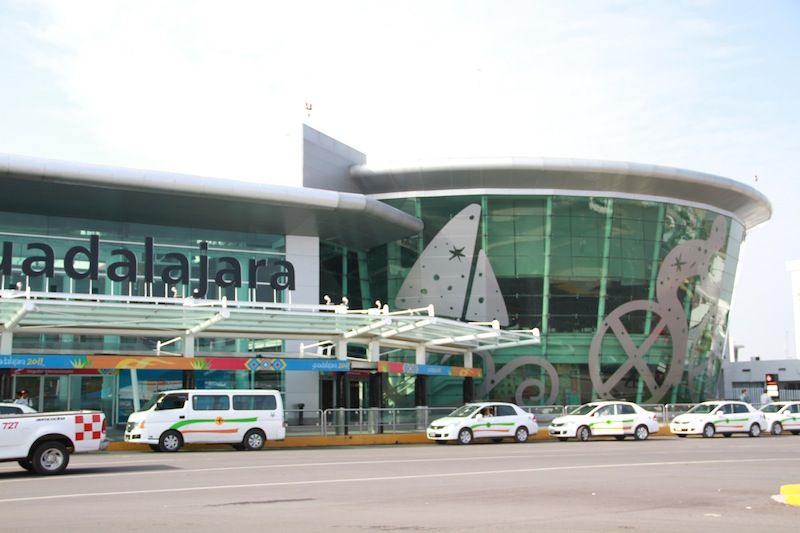The three airport groups operating in Mexico, Grupo Aeroportuario Centro Norte (OMA), Grupo Aeroportuario del Sureste (ASUR) and Grupo Aeroportuario del Pacífico (GAP), are majority-owned by Mexican national capital.
In general, foreign investment in Mexico may not exceed 49% of the capital of the concessionaire companies.
However, according to a World Trade Organization (WTO) report, if approval is obtained from the National Foreign Investment Commission (CNIE), foreigners may exceed this limit and invest up to 100 percent. This is not currently the case.
Mexico has 78 airports, 65 of which serve international passengers; in 2022, the Felipe Angeles International Airport was inaugurated.
As in 2017, the airports are operated by three private airport groups (all Mexican capital) and public entities.
These are Aeropuertos y Servicios Auxiliares (ASA), Aeropuerto Internacional de la Ciudad de México (AICM), parastatal companies and, since 2020, Aeropuerto Internacional Felipe Ángeles (AIFA), incorporated to operate the Felipe Ángeles International Airport.
AICM operates the country’s main airport, that of Mexico City (CDMX).
ASUR
In addition to AICM and AIFA, two other state-owned companies operate in the airport sector: Servicios Aeroportuarios de la Ciudad de México (SACM) and Grupo Aeroportuario de la Ciudad de México (GACM). SACM provides all kinds of administrative services to the AICM and GACM. GACM was also in charge of building the new CDMX international airport (NAICM), a project started in 2014 that was abandoned in 2019, when 30% of the works had been executed.
In its place, in 2019, the Santa Lucia military base became the Felipe Angeles International Airport.
With the abandonment of NAICM construction, public spending on airport infrastructure was reduced from 29,503 million pesos in 2018 to 2,096 million pesos in 2019 and 657 million pesos in 2020, according to the WTO.
Mexico City International Airport and Toluca International Airport, together with Felipe Ángeles International Airport, make up the Metropolitan Airport System (Sistema Aeroportuario Metropolitano, SAM).
Airport operators must provide airport services or, alternatively, contract with third parties; in this case, the contracts require the approval of the AFAC.
Fees
At airports managed by private sector concessionaires, service fees are still regulated.
For each service, the SICT determines a maximum tariff per unit of traffic (equivalent to 1 passenger or 100 kg of cargo), based on the concessionaire’s investment plan; tariffs may be adjusted after considering the annual efficiency indicators achieved by the concessionaire and inflation.
The airport use fee (TUA) paid by all passengers is one of the regulated fees.
To take into account: revenues generated by the TUA account for more than half of total airport revenues and are, therefore, an important resource for concessionaires.
ASA, AICM and AIFA continue to set all airport tariffs for the airports they operate, but these must be approved by the SHCP and registered with the AFAC.
Fuel
Until 2018, ASA was the sole provider of air fuel storage, distribution and supply services. In 2018, Mexico liberalized that market.
However, FDI can be at most 49% of the capital of the companies supplying fuels.
To facilitate the opening of the market, during a transition period (from 2018 to 2019), ASA allowed new entrants to contract available capacity from its storage infrastructure.
A permit from the Energy Regulatory Commission (CRE) is required to supply aerial fuel.
Authorities indicate that ASA is still the main supplier. Airlines may provide ground handling services themselves or contract with another company, which may be another airline. A permit from the CAIA is required to provide these services.
In 2020-2021, in the wake of the pandemic, the authorities noted that airlines maintained commercial conditions (discounts for contracted volume) and were able to extend the deadline to pay for fuel, from 30 to 60 days.
Between 2017 and 2019 the number of international passengers arriving in Mexico increased from 44.4 to 47.9 million; in 2020, due to the pandemic, this figure decreased by 58.5%.
In 2021 air traffic began to rebound, but pre-pandemic levels have not yet been reached.
As of 2021 air traffic has also been affected by the decision of the United States to downgrade Mexico’s air safety standards, which has restricted air traffic between Mexico and the United States, the main market.
![]()

